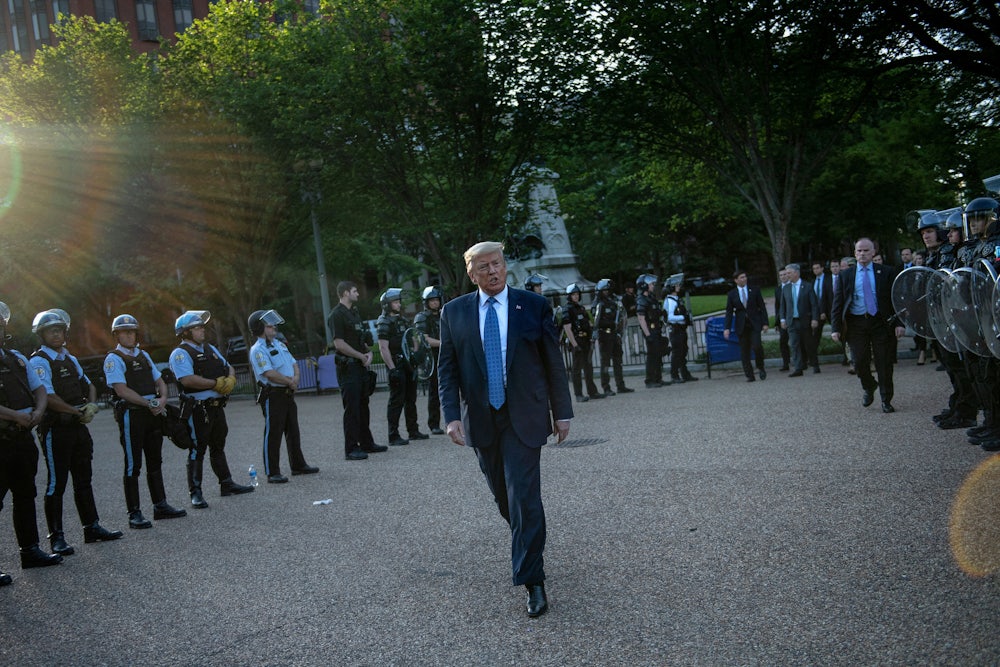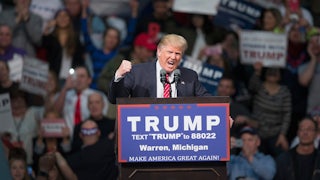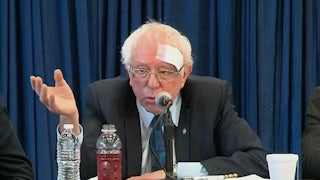The House January 6 committee, looking for direct evidence of Donald Trump’s involvement in insurrection, is considering changes to the Insurrection Act to prevent another January 6. What is the Insurrection Act? Signed in 1807 by President Thomas Jefferson, the act allows a president to call up the military in times of serious crisis to keep the peace. Amended twice during and after the Civil War, it was intended to quell insurrection from states and protect the newly recognized constitutional rights of Black people from white supremacists.
In only one period in our history has a president used the Insurrection Act in the context of elections. President Ulysses Grant invoked the newly amended Insurrection Act after the Civil War to quell political violence. Grant invoked those powers to prevent white supremacists in Louisiana, where a former Confederate soldier candidate lost the governor’s race, from violently preventing the rightful winner, a Reconstruction Republican, from taking office. In Arkansas the same year, two warring factions of Republicans had militias battling over who would take the governor’s seat after a narrow victory. Grant invoked the act to stop the violence and instate the candidate who won. And in Vicksburg, Mississippi, a white mob deposed a duly elected Black sheriff and massacred Black citizens who tried to reinstate him. Grant acted again.
Contrast these examples with Trump and his allies’ public push in the last presidential election to suggest that the act be used to overturn the election results, which probably helped foment a violent coup rather than to prevent one. In the run-up to the 2020 election, Trump threatened to place law enforcement at polling sites and to use the Insurrection Act on election night if there were what he called “riots.” That September, he pardoned felon Roger Stone, who was involved in organizing the rally on January 6, 2021. Stone explicitly called on Trump to use the act to call out the military, U.S. marshals, and federal law enforcement and to have Nevada voting machines preemptively seized because the Democratic-leaning state could not be trusted. He even called for the arrest of Trump opponent Hillary Clinton.
Because of Trump’s abuses, Congress might consider creating more guardrails against a president abusing the considerable power of that seat to invoke the Insurrection Act for selfish political protection. That is necessary. As a result of the committee’s work to date, we have been getting a steady stream of details on just how imperiled the peaceful transfer of power was on January 6, 2021, not just by violent protesters but by the complicity of elected officials and Trump loyalists.
Disturbingly, just weeks after Attorney General Bill Barr said he could find no substantial evidence of voter fraud, former Trump national security adviser and pardoned perjurer Michael Flynn publicly claimed the military could rerun the 2020 election and Trump could seize voting machines. Flynn’s statements in mid-December 2020 were so outrageous and incendiary, they prompted Army Secretary Ryan McCarthy and chief of staff Gen. James McConville to issue a joint statement declaring the obvious: “There is no role for the U.S. military in determining the outcome of an American election.” A former military leader and Trump adviser, actively engaged in the events of January 6, was publicly asserting the uncontrovertibly unconstitutional. Not long after that, a fake social media account declared Trump had done just that—announced martial law. White House legal adviser Jenna Ellis was forced to post tweets stating plainly that that would be unconstitutional and was untrue.
We can go back further still for evidence of Trump’s desire to use the act for his own purposes. We know that Trump and his White House wanted to use the Insurrection Act to quell Black Lives Matter protests after George Floyd’s public execution at the knee of former Minneapolis police officer Derek Chauvin. When protesters were rallying in Lafayette Square across from the White House, Trump’s team drew up the Insurrection Act Proclamation for his signature. In fact, the National Guard—5,000 from Washington, D.C., and more from other states—was called up to violently suppress a relatively peaceful protest at the park because the military brass feared Trump might order it to send the 82nd Airborne Division. Black guardsmen had pushed back to their commanders, and the events that followed received widespread criticism, not just from congressional Democrats but from retired military officers. Former Joint Chiefs of Staff Gen. Martin Dempsey felt compelled to tweet, “America is not a battleground. Our fellow citizens are not the enemy.” It was an astounding and public display of raw abuse of power.
Trump said he wanted to use the Insurrection Act repeatedly, even following the horrendous events we witnessed at Lafayette Square. And we must not forget the video and reports from Black Lives Matter protests in Portland, Oregon. Federal agents reportedly snatched protesters off the streets and whisked them away in unmarked vehicles, as well as injuring protesters, going beyond the limits of their authority to protect a federal building. Trump’s allies were vocal. Senator Tom Cotton wrote a New York Times opinion column calling for the Insurrection Act to be used against protesters.
Even after all this, Trump showed no concern over the limits of presidential power, and his allies were laying the groundwork on public opinion for abuse of that power. We must understand the radical fringe nature of such actions to understand why we should be distressingly unsurprised.
A sitting president has not invoked the Insurrection Act since 1991, when George W. Bush called up the militia to stop the uprising in Los Angeles after the police officers who brutally beat Rodney King, an unarmed Black motorist, were acquitted of the crime caught on video tape. It’s not that the act was not used between Grant and Bush. I will not argue that the Insurrection Act was always used appropriately in the past. We also don’t know yet whether Trump will face criminal investigation for his part in the violence of January 6. What we do know is that Trump, his allies, and his congressional protectors, have all been complicit in the most disturbing assault on our constitutional order and the boundaries of presidential powers.
It was the struggle to end slavery that necessitated the Insurrection Act amendment that allowed presidents to call in the National Guard or the military to protect rights. It was Trump’s desire to use it to stifle First Amendment rights to protect Black lives after George Floyd that showed us that Trump was willing to abuse it. In our struggle to protect voting rights of Black, Latino, and Native American voters, BLM demonstrations have been like the canaries that miners carried into the coal mines to determine with the air was lethal. The very powers intended to protect Black people were being bandied about to lynch the Constitution. If we don’t get bipartisan agreement to protect protesters, voting rights, and elections, we will not have learned our lesson. A Trump run for the presidency in 2024 will simply bring more stoking of the constitutional lynch mob. A Trump victory may end the need for the mob at all. He may well feel empowered to use the military to do his bidding instead.






